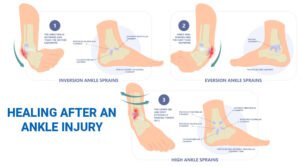Overview of Renal Cysts
Understanding Renal Cysts: A Comprehensive Overview
Read Time: 7 minutes
Renal cysts, commonly referred to as kidney cysts, are fluid-filled sacs that develop on the kidneys. These cysts can be solitary or multiple, and their nature, symptoms, and treatment depend on the type of cyst present. This article explores the different types of renal cysts, their causes, symptoms, and available treatments.
Types of Renal Cysts
Renal cysts come in various forms, with the most common being simple cysts. These cysts are typically enclosed by a thin, smooth wall and generally don’t cause any issues. Simple cysts are often discovered incidentally during medical imaging tests for unrelated health concerns.
However, cysts associated with Polycystic Kidney Disease (PKD), a genetic disorder, can cause more serious health issues. PKD can lead to kidney damage and dysfunction, high blood pressure, and complications involving the heart and blood vessels. In some cases, cysts may also form in the liver.
The Role of Genetics in PKD
PKD is inherited, meaning that if a family member has the condition, there is a higher likelihood of developing PKD. This condition can significantly affect kidney function, leading to complications like kidney failure in the later stages. Understanding your family history is crucial for identifying the risks associated with PKD.
Risk Factors for Renal Cysts
While the exact causes of renal cysts remain unclear, several risk factors are associated with their development. Simple kidney cysts are more common in individuals over the age of 40, and men seem to be more prone to developing them.
For those with PKD, the risk is higher if there is a family history of the disease. It is important to be aware of these risk factors to monitor kidney health and seek early intervention if necessary.
Symptoms of Renal Cysts
Simple kidney cysts typically don’t produce symptoms. However, in some cases, they can grow large enough to cause discomfort. Common symptoms associated with these cysts include:
-
High blood pressure
-
Pain in the back, side, or abdomen
-
A noticeable mass near the kidney area
-
Obstructed urine flow
-
Blood in the urine (hematuria)
PKD symptoms can develop years before they become noticeable. In addition to symptoms similar to those of simple cysts, individuals with PKD may experience:
-
Abdominal swelling
-
Feelings of fullness
-
Kidney stones
-
Urinary tract infections or kidney infections
-
Kidney failure
Possible Causes of Renal Cysts
The exact cause of kidney cyst formation is still uncertain, but a few factors might contribute. Blockages in the kidney’s structures could prevent proper urine flow, which may lead to cyst development. Additionally, poor blood circulation to the kidneys is another potential factor. In PKD, genetic mutations are the primary cause, leading to the formation of cysts over time.
Diagnostic Methods for Renal Cysts
Renal cysts are often discovered during imaging tests conducted for other conditions, as they may not cause noticeable symptoms. If a cyst is found, additional tests may be required to determine whether it is a simple cyst or a more serious condition. Common diagnostic tests include:
Ultrasound
A non-invasive and pain-free procedure, ultrasound uses sound waves to create images of the kidneys, helping to identify the size and condition of any cysts. Ultrasound does not involve radiation, making it safe for pregnant women and children.
CT Scan
CT scans create 3D images of the kidneys using X-rays. In some cases, contrast dye may be used to enhance the imaging. The Bosniak Scale is used to assess the severity of cysts seen on a CT scan, with higher Bosniak scores indicating a greater risk of malignancy.
MRI
MRI scans use radio waves and magnets to generate detailed images of the body. Like CT scans, contrast dye may be used. MRIs are often used to differentiate between complex benign cysts and malignant cysts.
Blood Tests
Blood tests can help determine if a cyst is affecting kidney function. These tests may also be used to monitor kidney health in individuals with PKD.
Genetic Testing
For individuals diagnosed with PKD, genetic testing can help determine whether their children are at risk of inheriting the condition.
Treatment for Renal Cysts
In most cases, simple kidney cysts don’t require treatment. However, if a cyst causes pain or impairs kidney function, medical intervention may be necessary. Treatment options include:
-
Aspiration or drainage of the cyst if it causes discomfort
-
Surgical removal of larger cysts
-
Monitoring and follow-up for complex cysts, especially those with septations or solid areas
For PKD, treatment focuses on managing symptoms and preventing further kidney damage. Medications may be prescribed to control high blood pressure or treat urinary tract infections. In severe cases, individuals with PKD may require dialysis or a kidney transplant.
Conclusion
Understanding the different types of renal cysts and their potential impact on kidney health is essential for early detection and treatment. While many cysts go undetected and are non-problematic, it is important to monitor your health and consult with a healthcare provider if you experience any symptoms or have a family history of kidney disease.
If you are diagnosed with a renal cyst, discussing your treatment options with a healthcare provider can help you make informed decisions about your care.
Key Takeaways
-
Renal cysts are common and often go undetected unless they cause symptoms or are discovered during imaging tests.
-
Simple cysts are typically harmless, but cysts associated with PKD can lead to kidney damage.
-
Early detection and management of renal cysts are important for maintaining kidney health.
-
Treatment may not be necessary for asymptomatic cysts, but medical intervention is required if complications arise.
Frequently Asked Questions
Q: Can renal cysts lead to kidney failure? A: While simple cysts typically do not lead to kidney failure, PKD can cause kidney dysfunction over time, potentially leading to kidney failure.
Q: Are renal cysts hereditary? A: Renal cysts associated with PKD are inherited. If a family member has PKD, you may be at higher risk for developing the condition.
Q: How are renal cysts diagnosed? A: Renal cysts are often diagnosed through imaging tests like ultrasounds, CT scans, and MRIs.
Q: Do renal cysts require treatment? A: Treatment is not usually necessary for simple cysts, but intervention may be needed if the cyst causes symptoms or kidney impairment.



